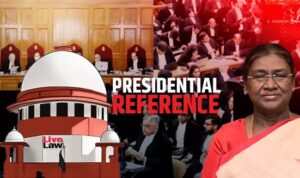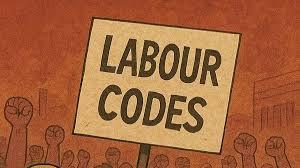Presidential Reference in India: Meaning, Process, and Significance
Introduction
The Presidential Reference is a vital constitutional mechanism in India that enables the President to seek the Supreme Court’s opinion on matters of public importance or constitutional interpretation. Rooted in Article 143 of the Indian Constitution, this tool ensures the President can obtain judicial clarity on complex legal questions that impact governance and national interest.
In this article, we explore the definition, types, procedures, and significance of Presidential References, while analyzing landmark cases and answering key FAQs.
What is a Presidential Reference?
A Presidential Reference is a formal request made by the President of India to the Supreme Court to advise on constitutional or legal questions. It is a non-binding opinion given under Article 143 of the Indian Constitution.
Constitutional Provision: Article 143
Article 143 (1) – Advisory Jurisdiction
The President may refer any question of law or fact of public importance to the Supreme Court. The Court may choose to give its opinion.
Article 143 (2) – Reference on Disputed Pre-Constitutional Treaties
When a dispute arises from pre-Constitutional agreements, treaties, or instruments, the President is required to seek the Court’s opinion.
Types of Presidential Reference
Voluntary (Discretionary) Reference – Under Article 143(1), invoked when:
There’s a constitutional ambiguity.
The President needs guidance on legislative or executive powers.
Major political or social controversies require legal interpretation.
Mandatory Reference – Under Article 143(2), usually arises from pre-Constitutional treaties or legal obligations that need clarification.
Process of Presidential Reference
Identification of Legal Question
The President, usually advised by the Council of Ministers, identifies a matter requiring Supreme Court’s input.Drafting of the Reference
A formal reference is drafted outlining the facts, legal questions, and context.Supreme Court Hearings
The matter is treated like a regular court case, with notices issued to stakeholders and public interest parties.Advisory Opinion
After hearings, the Supreme Court delivers its opinion, which, although not binding, carries high legal and moral authority.
Significance of Presidential Reference
Guides Constitutional Interpretation
Helps clarify grey areas in constitutional law.Prevents Future Litigation
Proactively addresses issues that could lead to disputes.Strengthens Executive-Judiciary Dialogue
Promotes cooperation between the judiciary and executive without compromising independence.Protects Public Interest
Used in matters with widespread legal, political, or social impact.
Landmark Presidential Reference Cases
1. In re Berubari Union Case (1960)
First-ever Presidential Reference.
Question: Whether territory can be ceded to another country without a constitutional amendment.
Outcome: Supreme Court ruled that a constitutional amendment was necessary.
2. Keshav Singh’s Case (1965)
Question: Whether a legislative assembly can punish someone for contempt even when the judiciary is involved.
Outcome: Clarified the limits of legislative privilege.
3. In re Special Courts Bill (1979)
Asked whether setting up special courts for politicians was constitutionally valid.
Supreme Court upheld the bill with conditions.
4. In re Cauvery Water Disputes Tribunal (1992)
Concerned the distribution of river waters between states.
Supreme Court declined to give opinion, stating it was not a matter fit for Presidential Reference.
5. In re 2G Spectrum Case (2012)
Question: Whether natural resources like spectrum must be auctioned.
Outcome: Supreme Court advised that auction is the most transparent method.
Presidential Reference vs Judicial Review
| Feature | Presidential Reference | Judicial Review |
|---|---|---|
| Initiator | President of India | Supreme Court |
| Nature | Advisory | Binding |
| Purpose | Interpretation or opinion | Scrutiny of constitutionality |
| Outcome | Non-binding opinion | Binding judgment |
SEO Keywords
Presidential Reference in India
Article 143 Indian Constitution
Advisory jurisdiction of Supreme Court
President Supreme Court opinion
Landmark Presidential Reference cases
Meaning of Presidential Reference
Presidential Reference vs Judicial Review
Frequently Asked Questions (FAQs)
Q1: What is a Presidential Reference?
A Presidential Reference is a mechanism by which the President of India seeks the opinion of the Supreme Court on questions of law or fact under Article 143 of the Constitution.
Q2: Is the Supreme Court bound to answer a Presidential Reference?
No, under Article 143(1), the Supreme Court may choose to answer or decline. However, under Article 143(2), the Court is obligated to respond.
Q3: Is the Supreme Court’s opinion binding on the President or government?
No, the opinion given by the Supreme Court in a Presidential Reference is advisory and not legally binding, though it carries high persuasive value.
Q4: Who advises the President to send a reference?
Usually, the Council of Ministers advises the President, though the constitutional power formally rests with the President.
Q5: Can Presidential Reference be used to review Supreme Court judgments?
No, it cannot be used as a tool to bypass or challenge judicial verdicts. It is used to seek clarification on unsettled questions.
Conclusion
The Presidential Reference is a constitutional bridge between the executive and the judiciary. By enabling the President to consult the Supreme Court on complex legal questions, it plays a crucial role in maintaining constitutional clarity, legal harmony, and democratic balance. Though non-binding, the Supreme Court’s opinion often shapes national policies and interpretations for years to come.







